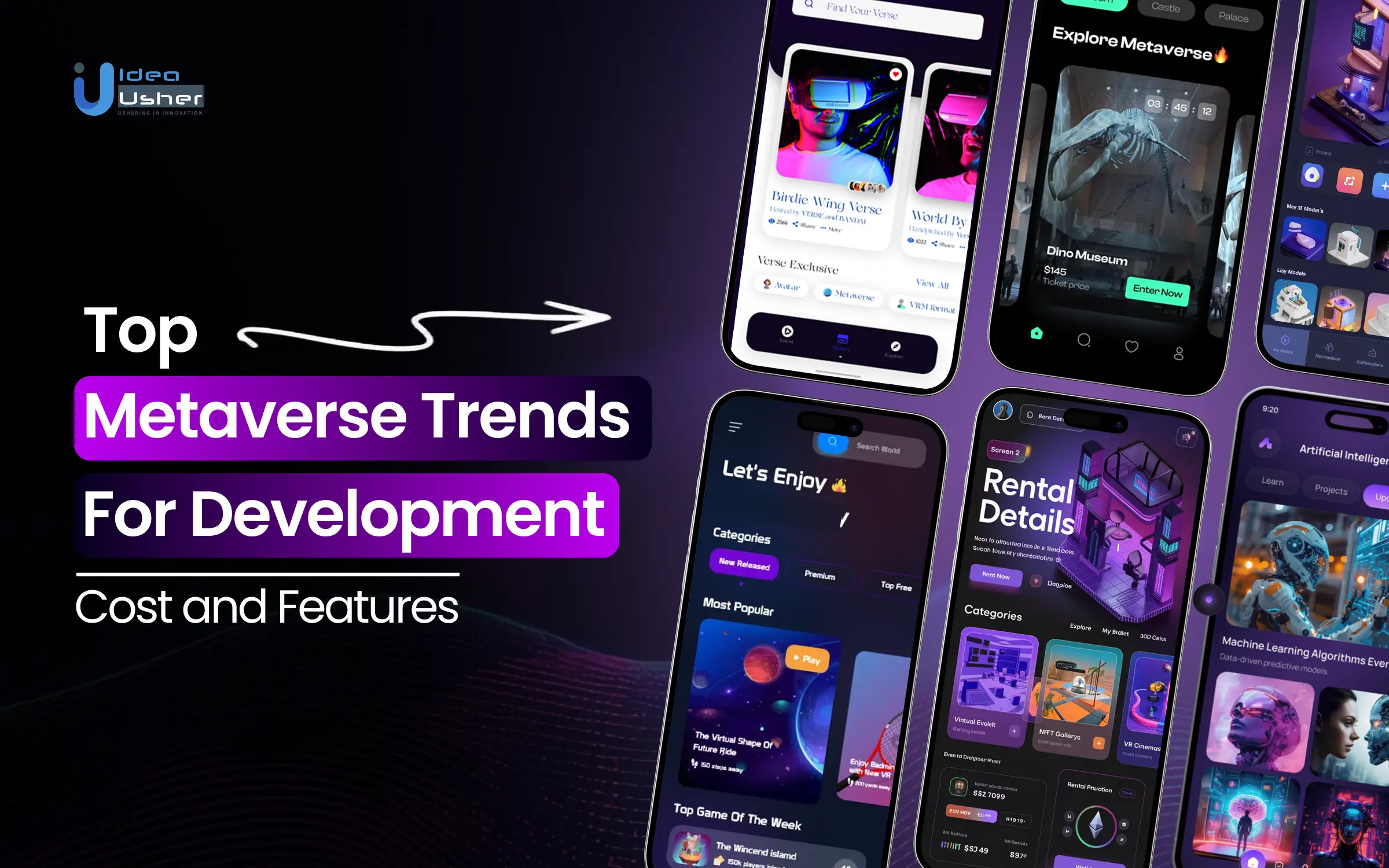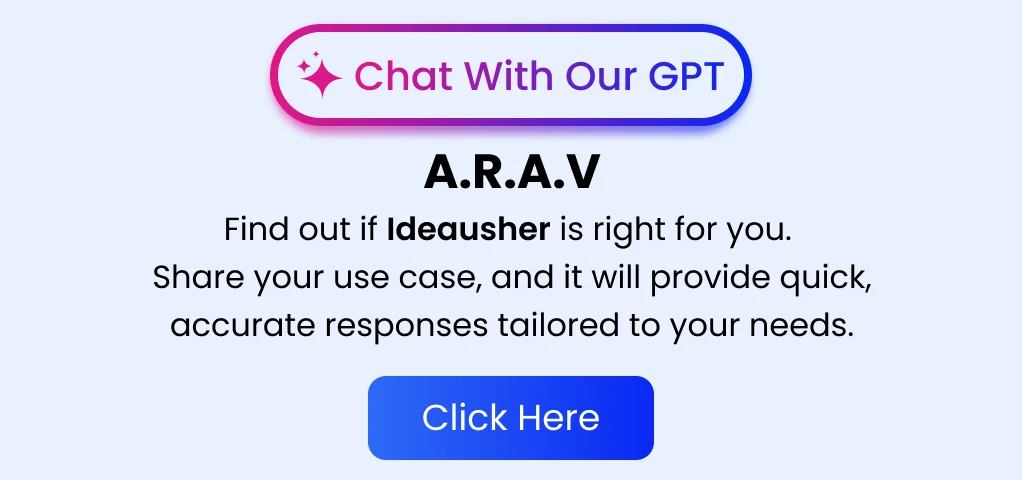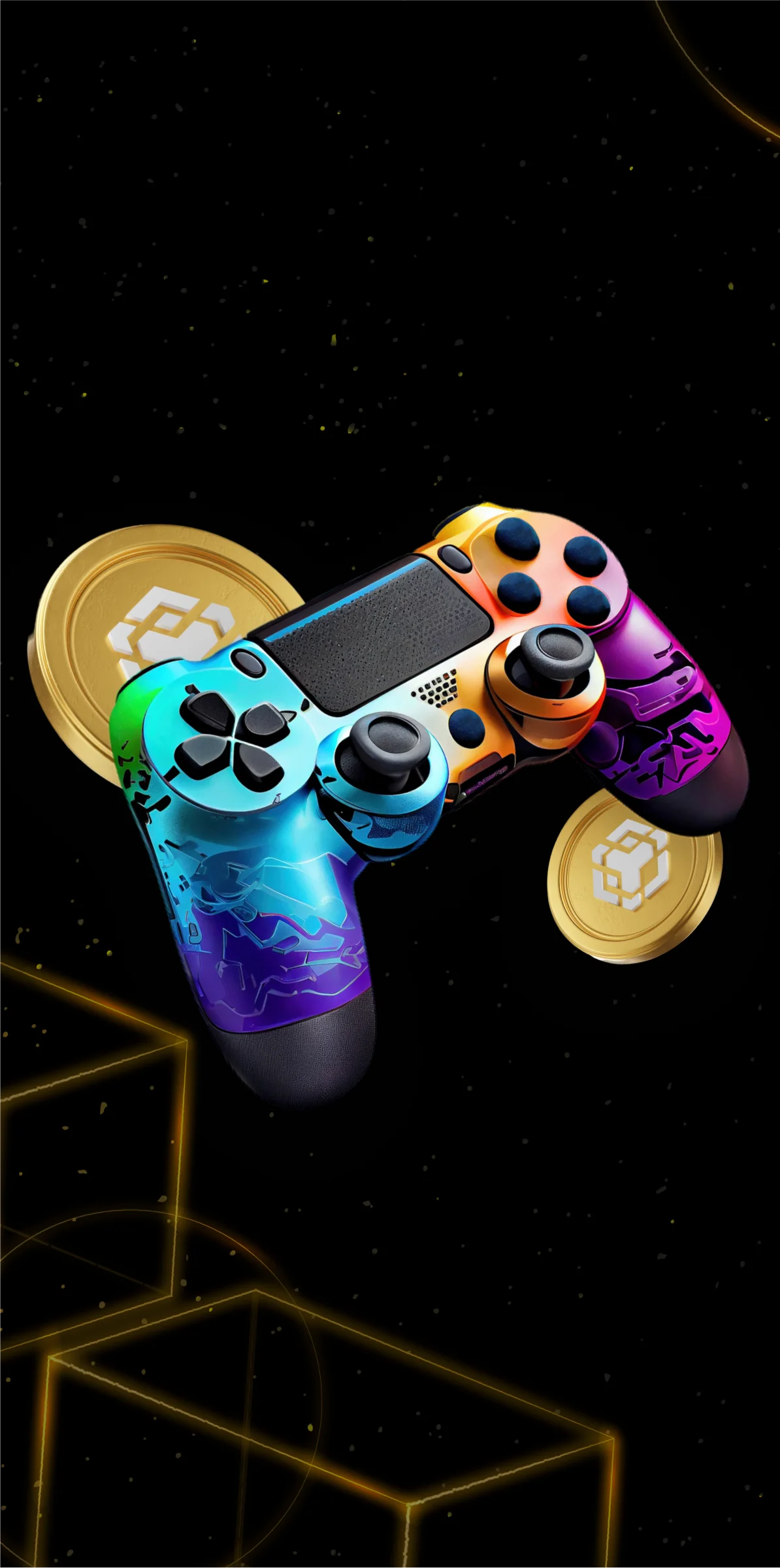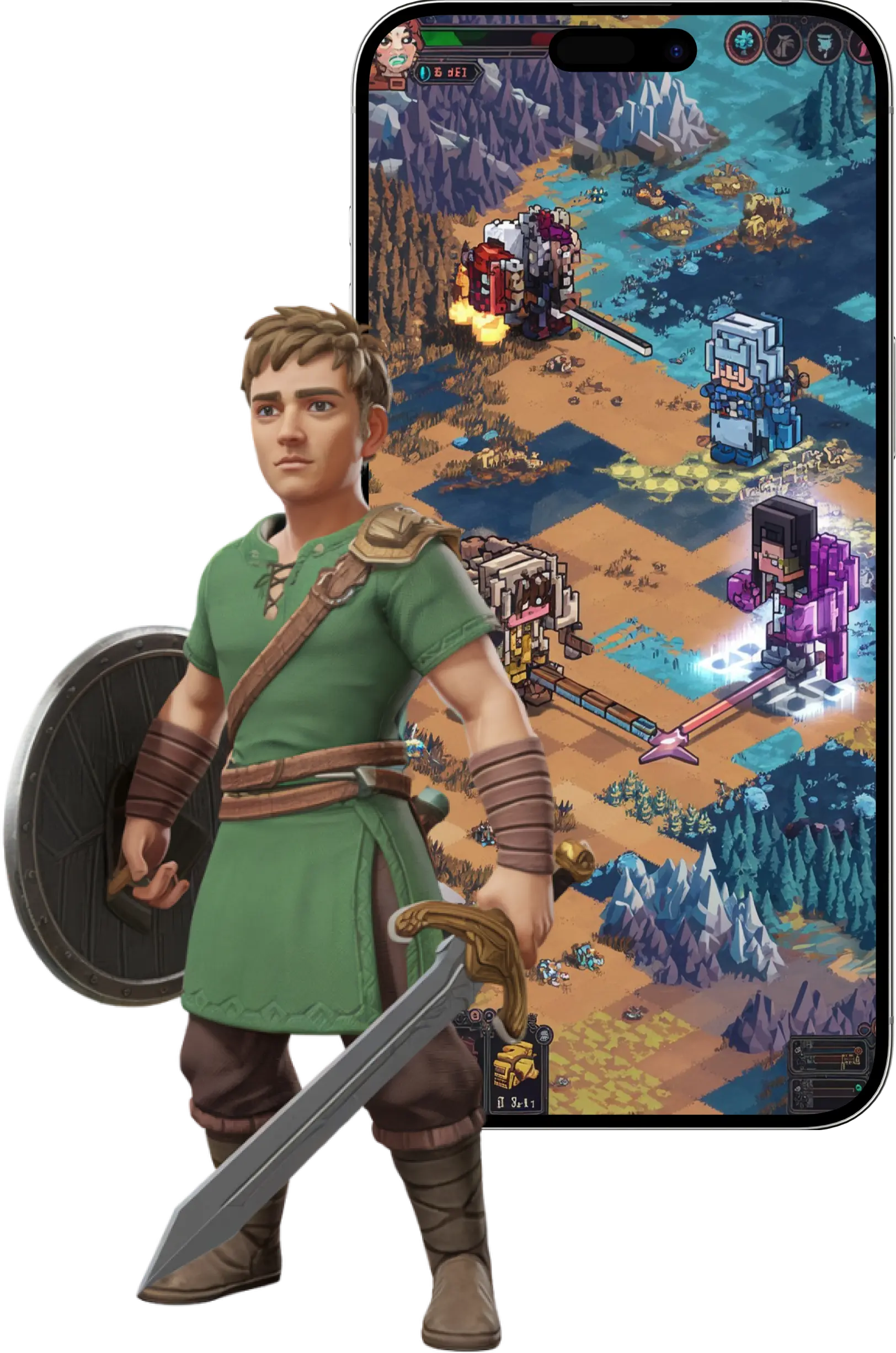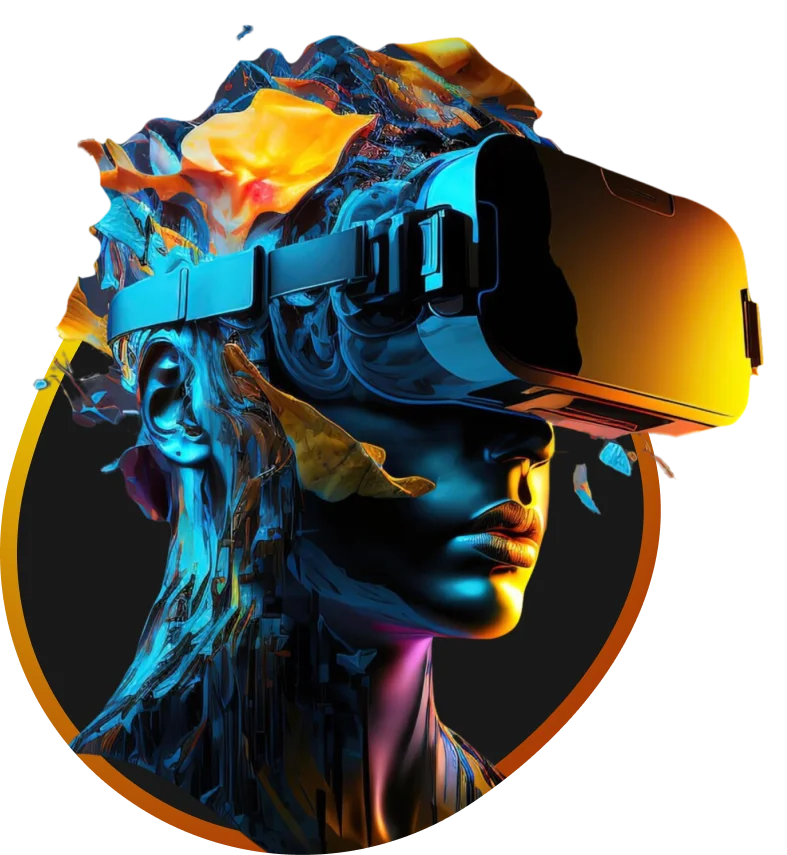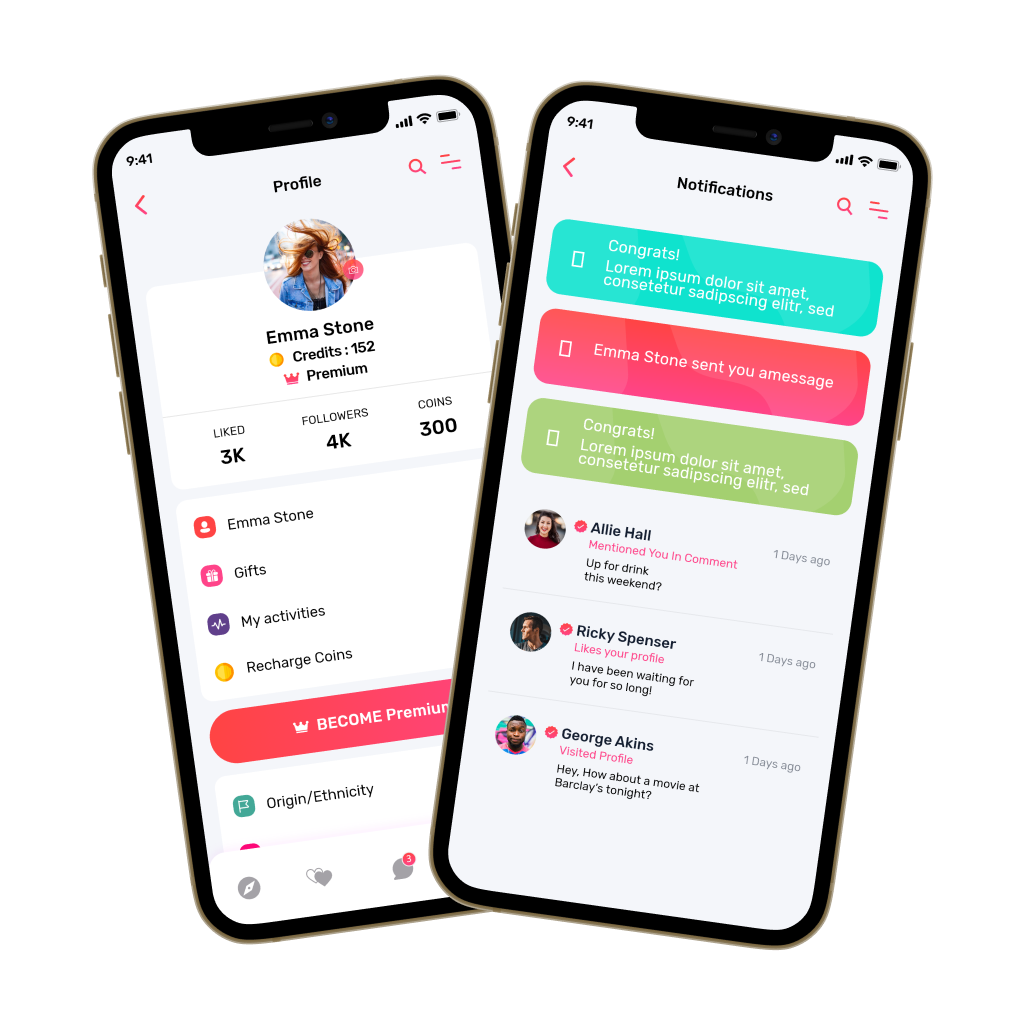The metaverse is evolving quickly changing how businesses, developers, and consumers interact in digital spaces. Thanks to advancements in artificial intelligence, blockchain, and immersive technologies, When examining the top metaverse trends for development, it’s clear that advancements in artificial intelligence, blockchain, and immersive technologies are key. The metaverse is now a thriving digital economy rather than just a future concept.
For example – Roblox, a leading metaverse space, has millions of daily users and substantial influence. It forecasts 2025 revenue between $4.25 billion and $4.35 billion, in line with analyst expectations of $4.29 billion.
Emerging trends like virtual real estate, decentralized finance, AI avatars, and extended reality (XR) are shaping the next phase of metaverse development. This blog reviews top metaverse trends, essential features for development, and cost considerations for building a metaverse platform.
Key Market Takeaways Of Metaverse Market
The global metaverse market is poised for remarkable growth. Its size is estimated at USD 105.40 billion in 2024 and is projected to expand at a compound annual growth rate (CAGR) of 46.4% from 2025 to 2030. Increasing investments in virtual worlds, digital assets, and immersive technologies across industries drive this rapid growth.
In 2020, the average price of virtual land in Decentraland was approximately $6,000. By early 2022, this average rose to around $13,000 per parcel, indicating a remarkable increase in value.
Fortnite showcases the revenue potential of virtual experiences. Events like the Travis Scott concert attract millions of viewers and generate income through virtual merchandise and sponsorships for Epic Games.
As businesses and developers continue to explore opportunities in virtual spaces, the metaverse is expected to transform industries such as gaming, e-commerce, real estate, education, and entertainment. Thus, it will be a critical area for innovation and investment in the coming years.
Why Invest In Metaverse Right Now
This is an ideal moment to invest in the metaverse, given its remarkable growth potential. The market is anticipated to experience a compound annual growth rate (CAGR) of between 36.35% and 47.2% from 2025 onward to 2030/32.
The user base is also set to exceed one billion active users by 2025, signaling strong demand and high returns. Major corporations like Meta and Microsoft are already investing billions in providing market stability and credibility.
Technological advancements in VR, AR, blockchain, and AI are making the metaverse more immersive, driving new business opportunities in virtual real estate, NFTs, digital goods, and virtual services.
As digital land values increase and mainstream investments expand, the metaverse presents a future-proof investment with significant potential. Furthermore, forthcoming regulations are anticipated to improve transparency and safety, making this the perfect time for investors to take advantage of this rapidly growing digital economy.
Top Metaverse Trends For Development
The metaverse is rapidly evolving, driven by cutting-edge technology and innovative use cases that redefine digital interaction and commerce.
1. Decentralized Virtual Economies
Blockchain is central to metaverse economies, enabling users to own, trade, and monetize digital assets such as NFTs and cryptocurrencies. Decentralized platforms build trust and security, allowing participation in virtual markets without intermediaries. Startups are adopting secure blockchain transactions to develop digital marketplaces for buying and selling digital land, virtual products, and unique assets.
Example – Decentraland is a blockchain-based metaverse platform where users can utilize cryptocurrency to buy, sell, and trade virtual land and assets.
2. AI-Powered Avatars and Virtual Assistants
AI transforms user experiences with intelligent avatars that interact in real time. These avatars provide personalized assistance, adapting to user preferences. AI enhances NPCs in virtual games, making interactions dynamic and realistic. Startups create lifelike avatars that respond naturally, boosting immersion from gaming to customer service in virtual malls.
Example – Ready Player Me is a platform that provides customizable, AI-powered avatars for use across various virtual worlds and metaverse applications.
3. Immersive Social Interaction Platforms
The metaverse enhances social connections via immersive platforms for real-time collaboration, virtual concerts, and global conferences. Fortnite showcased this potential with the Travis Scott concert, which attracted millions. By 2025, expect innovative social spaces for shared virtual experiences, from casual meet-ups to large-scale events.
Example – Horizon Worlds by Meta is a social VR platform where users can meet, socialize, and engage in shared virtual experiences such as concerts and meetups.
4. Virtual Workspaces and Collaboration Tools
As remote work grows, the metaverse provides virtual offices for teams to collaborate using AR and VR tools. These spaces mimic physical offices with meeting rooms and interactive whiteboards, boosting productivity and engagement. Companies adopt these tools for a seamless remote experience that bridges physical and digital divides.
Example – Spatial is a virtual workspace platform that provides 3D meeting spaces for remote teams to collaborate using VR and AR tools.
5. Sustainable Practices and Green Technology
As digital environments expand, sustainability is a priority. Metaverse startups focus on eco-friendly solutions, like using renewable energy and optimizing server operations to reduce carbon footprints. These initiatives build sustainable virtual spaces, ensuring metaverse growth does not harm the environment.
Example – The Sandbox is a blockchain metaverse platform that aims to reduce carbon emissions through its partnership with Polygon, a low-energy blockchain solution.
6. Immersive Education and Training Advancements
The metaverse is transforming education by providing immersive learning experiences. Virtual campuses allow students to attend classes, interact with professors, and collaborate within digital environments. It enables skill development through realistic simulations, letting learners practice tasks like medical procedures without real-world consequences. Additionally, it offers on-demand access to educational content and training programs anytime. These advancements make education more accessible, engaging, and practical, revolutionizing how knowledge and skills are acquired.
Example – Engage VR is a virtual reality platform utilized by Stanford University and HTC Vive. It provides virtual classrooms, interactive training simulations, and collaborative environments for students to learn intricate subjects like medical surgery, engineering, and business strategies through hands-on experiences in a safe virtual space.
7. Healthcare and Wellness In Metaverse
The metaverse is transforming healthcare with innovative remote services for fitness and mental wellness. By 2025, telemedicine has expanded, allowing doctors to consult and patients to access care from home. Immersive platforms provide personalized fitness programs using biometric data and mental health support. Virtual environments also facilitate therapy, meditation, and treatments for anxiety and PTSD.
Example – XRHealth offers virtual reality therapy for chronic pain, stress, and cognitive rehabilitation through immersive experiences, enhancing healthcare accessibility and affordability.
8. Fashion Industry In The Metaverse
The metaverse is changing the fashion industry by offering immersive virtual spaces where brands can connect with customers in dynamic and innovative ways. It enables unparalleled creativity, interactive product displays, and new revenue opportunities, all while minimizing operational costs. Fashion brands can design digital apparel, host virtual runway shows, and deliver personalized shopping experiences, expanding their reach and fostering deeper customer engagement.
Example – Gucci has embraced digital fashion by launching exclusive virtual sneakers that users can wear across multiple metaverse platforms.
How To Develop Metaverse
Developing a metaverse needs a strategic blend of technology, user design, and ongoing innovation. Here’s a guide to metaverse development:
1. Define Your Vision and Objectives
Before diving into development, clearly define the purpose of your metaverse. Identify whether it will focus on gaming, social interaction, education, virtual commerce, or a hybrid model. Understanding your target audience is crucial, as their needs and preferences will shape the user experience, features, and overall design of your virtual world.
2. Conduct Thorough Research and Market Analysis
Analyze existing metaverse platforms like Decentraland and Fortnite to gain insights into successful models and identify market gaps. Stay updated on emerging technologies such as blockchain, AI, and extended reality (XR), as these will form the backbone of your metaverse’s infrastructure and user experiences.
3. Select the Right Technology Stack
Choosing the appropriate technology stack is essential. Game engines like Unity and Unreal Engine offer robust tools for creating immersive virtual environments. WebXR and A-Frame frameworks facilitate web-based VR and AR experiences, while blockchain integration ensures secure transactions, digital asset ownership, and decentralized governance within your metaverse.
4. Design an Engaging User Experience
Develop an intuitive user interface (UI) using modern frameworks like React.js for web-based interfaces and Flutter for cross-platform mobile applications. Focus on user experience (UX) design to ensure seamless navigation, accessibility, and engagement within the virtual space. Incorporate customizable avatars, social interaction features, and immersive elements such as dynamic 3D environments and real-time interactions to enrich the user journey and provide an engaging digital experience.
5. Create 3D Spaces and Digital Assets
Utilize 3D modeling tools like Blender and Maya to design realistic avatars, environments, and objects. World-building involves constructing diverse and immersive virtual spaces that resonate with your vision, offering users unique experiences and opportunities for interaction, exploration, and commerce.
6. Implement Interactivity and Features
Enhance interactivity with C# and JavaScript for actions, animations, and real-time events. Use backend technologies like Node.js and Python for efficient data handling and scalability. Leverage cloud platforms such as AWS, Google Cloud, or Microsoft Azure for strong infrastructure and real-time synchronization. Add social features like chat, voice, and video to promote community and collaboration in the metaverse, ensuring a connected virtual experience experience.
7. Test Your Platform
Conduct alpha testing with a small user group to identify usability issues and gather feedback. Expand to beta testing for broader feedback, performance analysis, and bug identification. Iterative testing ensures that your platform is stable, user-friendly, and ready for a wider audience.
8. Optimize Performance
Optimize 3D assets to reduce load times and enhance rendering performance. Implement scalable server solutions that accommodate growing user numbers, ensuring consistent performance, minimal latency, and robust security.
9. Launch Strategically and Market Effectively
Begin with a soft launch, offering limited access to build anticipation and gather initial feedback. Then, develop a comprehensive marketing strategy using social media, influencers, and gaming communities to attract and retain users. Finally, highlight unique features and value propositions to differentiate your metaverse.
10. Collect Feedback & Continuous Improvement
Build a strong user community through forums, social media, and in-platform events. Encourage user-generated content and feedback to keep the platform dynamic and engaging. Regularly update features, fix issues, and introduce new experiences based on user interactions and technological advancements.
Cost of Developing The Metaverse
The cost of developing a metaverse platform varies depending on the scope, features, and technologies used, with an estimated budget ranging from $10,000 to $100,000.
| Development Steps | Tasks | Description | Estimated Cost |
| Define Your Vision | Project Planning | Identifying purpose, target audience, and project scope | $1,000 – $3,000 |
| Research and Analyze | Market and Tech Research | Analyzing market trends, competitors, and suitable technologies | $2,000 – $5,000 |
| Choose Technology Stack | Platform & Tools Selection | Selecting engines (Unity/Unreal), frameworks, and blockchain | $2,000 – $8,000 |
| Design User Experience | UI/UX Design | Creating wireframes, UI designs, and user journey mapping | $3,000 – $10,000 |
| Develop 3D Spaces and Assets | 3D Modeling & World Building | Designing 3D assets, avatars, and immersive environments | $5,000 – $20,000 |
| Implement Interactivity | Backend & Frontend Development | Adding user interactivity, animations, social features | $8,000 – $30,000 |
| Test the Platform | Alpha & Beta Testing | Conducting testing phases for performance and bug fixes | $2,000 – $7,000 |
| Optimize Performance | Content & Server Optimization | Enhancing performance, scalability, and server stability | $3,000 – $10,000 |
| Launch and Market | Soft Launch & Marketing | Initial launch, promotional campaigns, community engagement | $4,000 – $15,000 |
| Foster Engagement & Iterate | Community Management & Updates | Building user community, gathering feedback, and improvements | $5,000 – $15,000 |
Total Estimated Cost: $10,000 – $100,000
Top Recent Examples Of Growth In Metaverse
1. Roblox
Roblox is a popular metaverse platform that allows users to create, share, and explore virtual experiences. With millions of user-generated games and activities, it serves as both an entertainment hub and a development platform, attracting creators, brands, and gamers worldwide.
2. Fortnite
Beyond being a leading battle royale game, Fortnite has evolved into a dynamic metaverse platform. It hosts virtual concerts, live events, and social spaces, enabling users to interact in immersive settings beyond traditional gameplay.
3. Decentraland
Decentraland is a blockchain-based virtual world where users can buy, sell, and develop virtual real estate using cryptocurrency. Its decentralized nature offers users complete ownership of digital assets, making it a hub for virtual commerce, entertainment, and creativity.
4. The Sandbox
The Sandbox is a decentralized metaverse platform that empowers users to create, own, and monetize their gaming experiences. Built on blockchain technology, it facilitates the creation of virtual assets and experiences, attracting developers, artists, and investors.
5. VRChat
VRChat is a virtual reality social platform where users can create avatars, build worlds, and interact with others in real time. Known for its creativity and community-driven content, VRChat offers limitless possibilities for social interaction and immersive experiences in the metaverse.
Conclusion
The metaverse presents unparalleled opportunities for businesses to innovate, connect, and grow in a digital-first environment. This blog has provided you with a full guide, including the top metaverse trends revolutionizing the industry, a step-by-step guide to building your own metaverse platform, and an open-and-honest cost breakdown to allow you to budget your investment effectively. By using these insights, business leaders can make informed choices regarding the complexities of metaverse construction and open up new avenues to business growth. If you are seeking new sources of revenue, enhancing customer experiences, or developing virtual communities, this guide gives you the knowledge and framework to make your metaverse vision a reality.
Looking to Develop a Metaverse Marketplace for Your Business?
With over 500,000 hours of coding expertise, we are leaders in developing innovative and scalable metaverse marketplaces tailored to your unique needs. Our advanced solutions help businesses create immersive virtual spaces, enable secure digital transactions, and provide seamless user experiences. From blockchain integration to 3D asset development and real-time interactivity, we empower organizations to leverage the full potential of the metaverse. Partner with Idea Usher to build a cutting-edge metaverse marketplace that redefines digital commerce, enhances user engagement, and drives business growth.
Work with Ex-MAANG developers to build next-gen apps schedule your consultation now
FAQs
Q.1. What is the metaverse?
The metaverse is a collective virtual space created by the convergence of virtually enhanced physical reality and persistent virtual worlds. It combines elements of the internet, virtual reality (VR), augmented reality (AR), and other emerging technologies to provide immersive, interactive environments where users can socialize, work, shop, and engage in various activities.
Q.2. How can businesses benefit from the metaverse?
Businesses can leverage the metaverse for virtual marketing, digital storefronts, remote collaboration, enhanced customer engagement, and new revenue opportunities. It offers immersive brand experiences, virtual events, and the sale of digital goods and services, transforming traditional business models.
Q.3. What technologies are driving the development of the metaverse?
The development of the metaverse is powered by key technologies such as virtual reality (VR), augmented reality (AR), blockchain, artificial intelligence (AI), and the Internet of Things (IoT). These technologies ensure immersive user experiences, secure digital transactions, and seamless real-time interactions across devices.
Q.4. Is the metaverse safe for users?
The safety of the metaverse depends on platform security measures and user practices. While developers must address data privacy, cybersecurity, and online harassment, users should also follow best practices for online safety and be aware of platform-specific policies to ensure a secure virtual experience.
